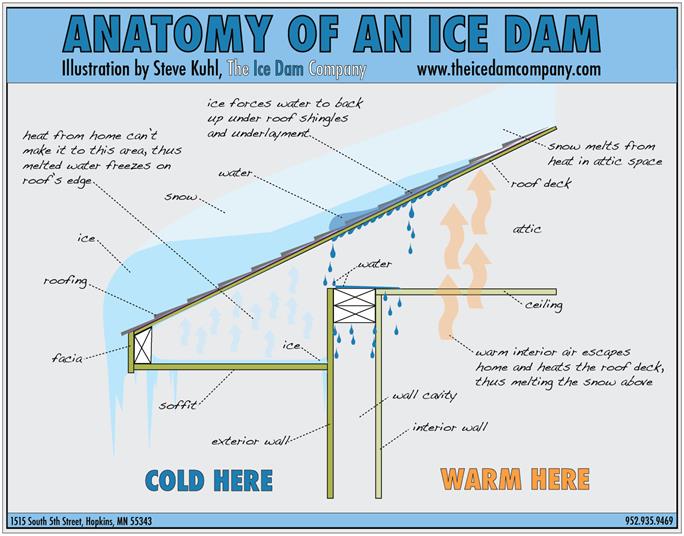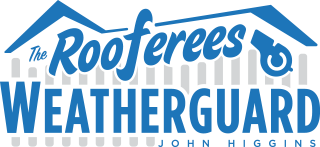The first significant snow of the season has already fallen, and many homeowners are experiencing problems as a result. Water spots on interior ceilings and leaking inside your home after a snow fall we had are signs you may have an ice jam on your roof.
Ice jams occur when precipitation, in this case snow, is in a pattern of melting and refreezing. Snow will melt as the temperature climbs, and refreezes as the temperatures dip, forcing the water and ice under shingles and the roof underlayment. This eventually leads to the water leaking in your house. But the problem is not the roof, it’s what is happening under your roof that is to blame.
Inadequate insulation in your home allows heat to escape into your attic. As the heat in the attic reaches the roof, the roof deck warms and melts the snow on top of your roof. The pattern of melting and refreezing causes a layer of ice to form on the surface of your roof, under that snow, and this not only leads to water leaking into your home, but damage to your roofing as well.
Proper soffit ventilation can help prevent this from happening. Rising air should enter the soffits and out the roof. But if there are not enough vents in the soffits, or the vents have become clogged with debris, cotton from trees, paint or insulation, they can act like a vacuum, sucking in moisture from the snow and forcing the warm air to warm the roof decking.
This illustration shows how an ice jam forms when the air isn’t properly directed.

So what can you do to avoid an ice jam from forming on your roof? Here are a few steps:
- If your attic is unfinished, check to see if you can see light from the outdoors. If you are unable to see light, your soffit vents may be plugged
- Keep gutters and vents clean of visible debris
- Use a vent calculator to determine if you have an adequate number of vents
- Replace vents with newer vents that don’t get plugged as easily
- The attic should have a few feet of insulation. If you are unsure if your home has enough insulation, have a contractor check it out
- Watch for icicles to form – they can be an indication of an ice jam
Generally speaking, if your roof wasn’t leaking after rain in the fall, the leaking water you see now is more than likely not a problem with your roof – you probably have an ice jam. Wait for the snow and ice to melt off your roof and follow the steps above. If you are concerned, call the Rooferees!

